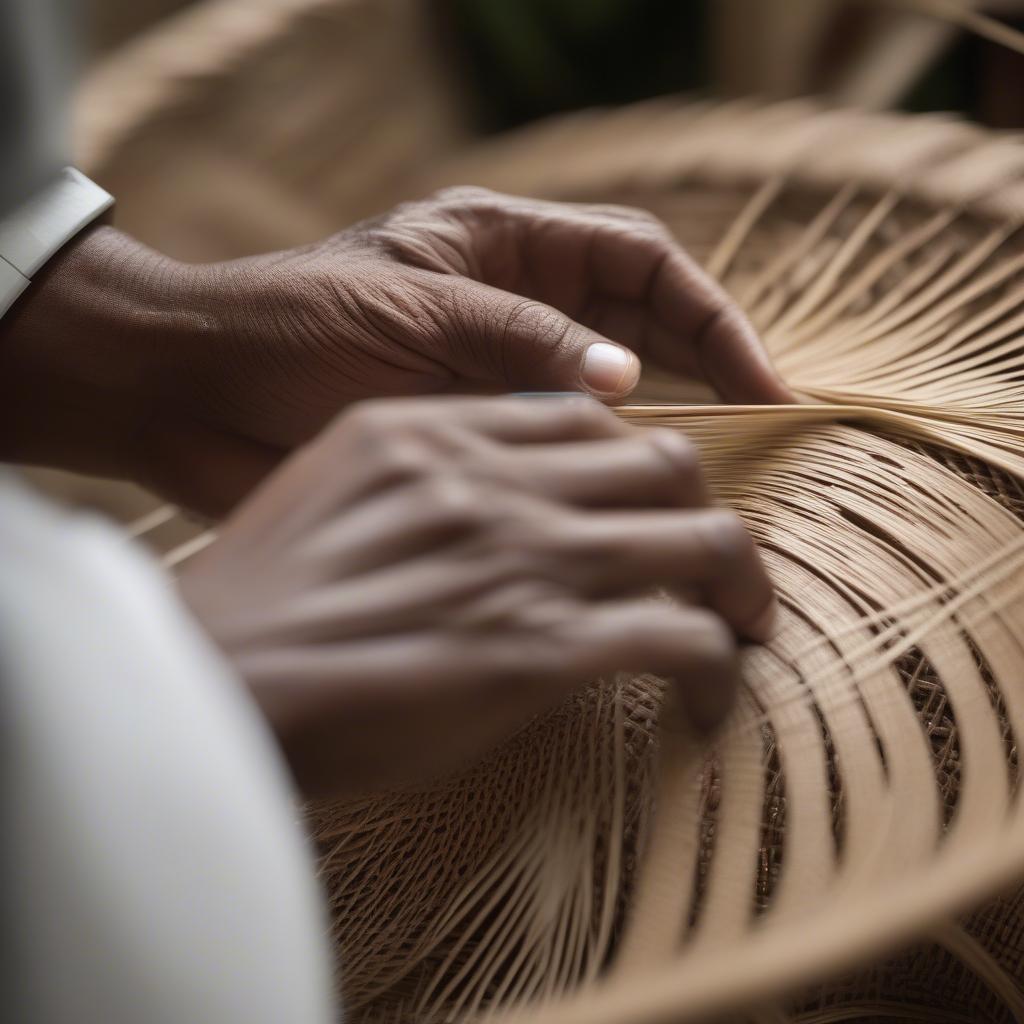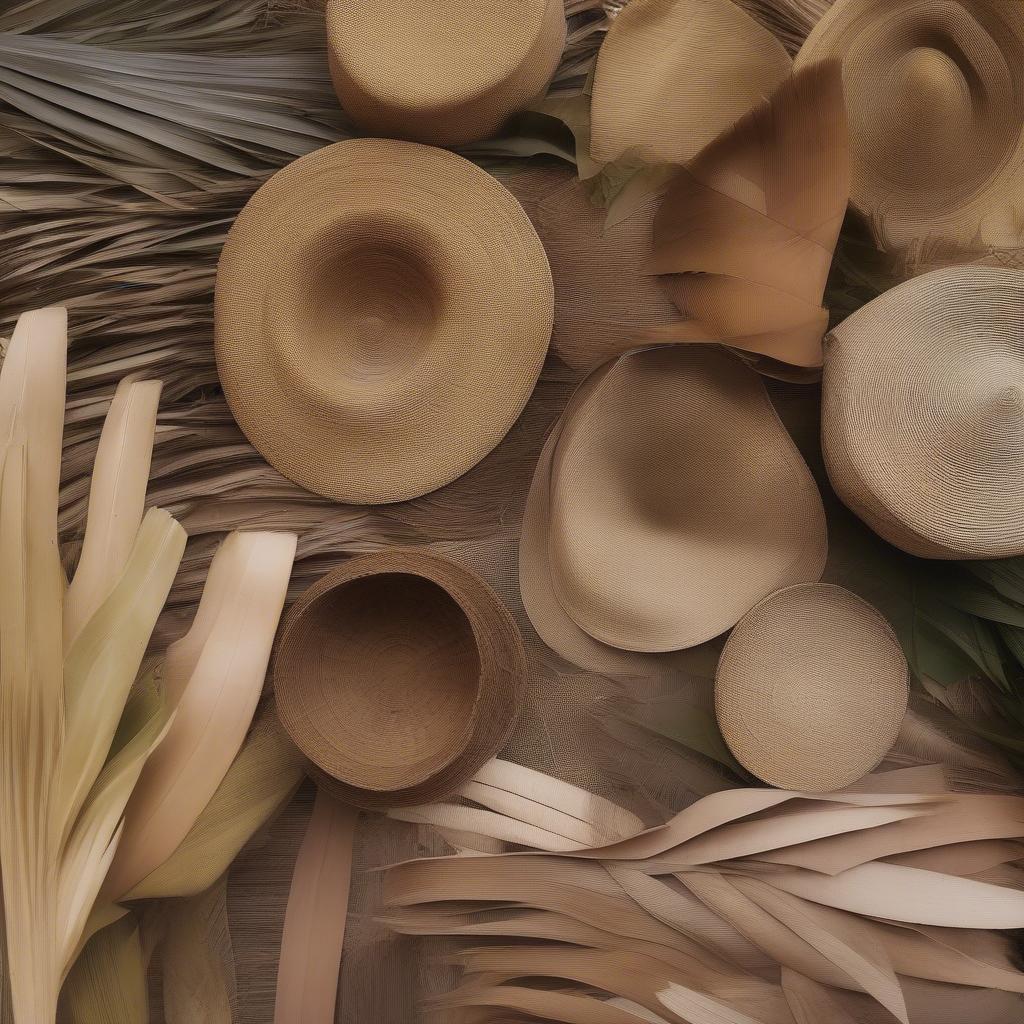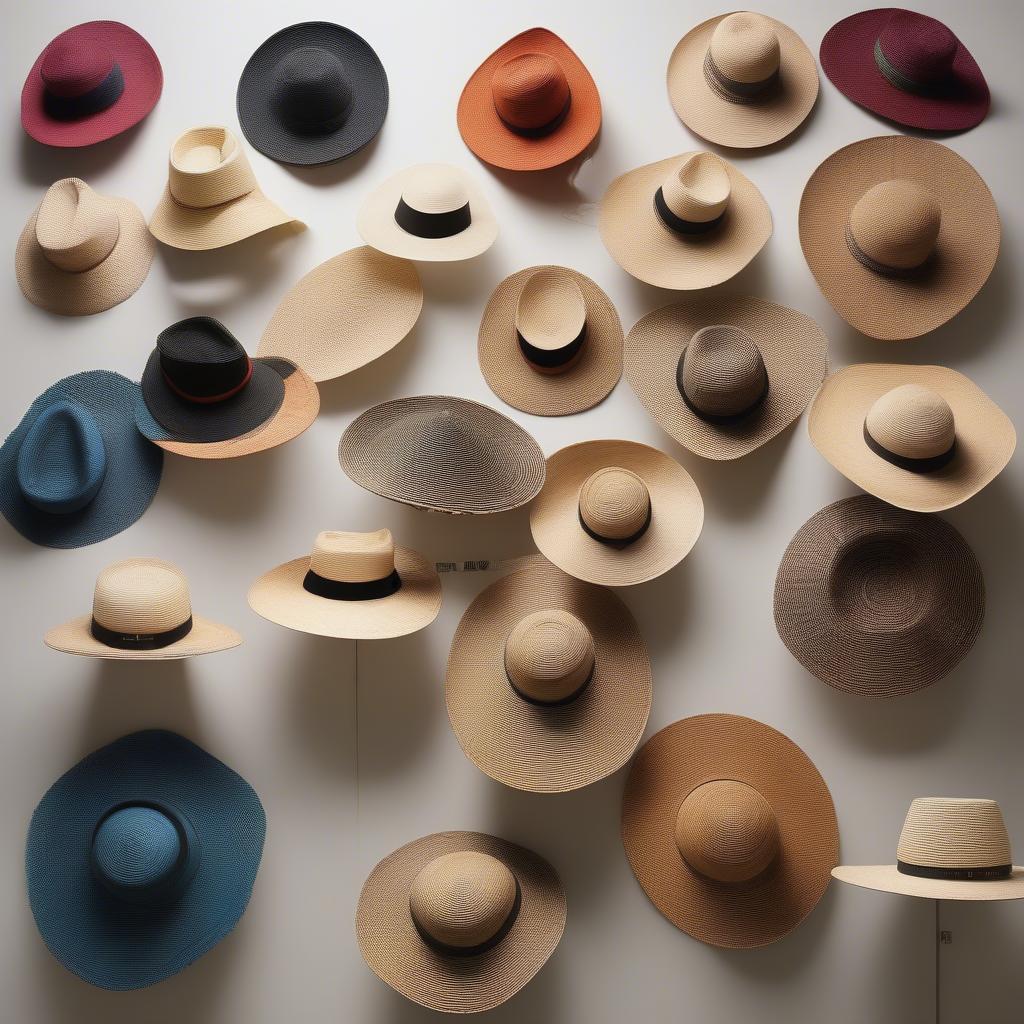Weave Hat
The Art of Palm Hat Weaving: A Comprehensive Guide
Palm Hat Weaving, a timeless craft, transforms humble palm fronds into stylish and functional headwear. From the intricate patterns of handcrafted hats to the cultural significance they hold, this guide delves into the fascinating world of palm hat weaving. Discover the history, techniques, and artistry behind this enduring tradition.  Close-up of hands weaving a palm hat
Close-up of hands weaving a palm hat
A Journey Through the History of Palm Hat Weaving
Palm hat weaving boasts a rich history, deeply intertwined with the cultures of tropical and subtropical regions around the world. For centuries, communities have relied on this craft for both practical sun protection and as a form of artistic expression. From the iconic Panama hat (actually woven in Ecuador from toquilla straw) to the simple yet elegant styles found in Southeast Asia, each region has developed its own unique techniques and designs. This long tradition has been passed down through generations, preserving cultural heritage and providing livelihoods for skilled artisans.
The versatility of palm leaves has allowed for a diverse range of hat styles, reflecting the unique needs and aesthetics of different cultures. Some hats are designed for everyday use, providing protection from the sun and rain, while others are reserved for special occasions, adorned with intricate embellishments and symbolic designs.
You might find it interesting to learn how to weave palm fronds into a hat or even straw hats. how to weave palm fronds into a hat and how to weave straw hats provide more information.
The Diverse Materials of Palm Hat Weaving
While the term “palm hat” suggests a single material, the reality is far more nuanced. Various palm species, each with its own unique properties, are utilized in this craft. Some of the most common include the coconut palm, the date palm, and the raffia palm. The selection of materials often depends on local availability, as well as the desired qualities of the finished hat, such as durability, flexibility, and texture.
 Variety of palm leaves suitable for hat making
Variety of palm leaves suitable for hat making
Palm Hat Weaving Techniques: From Simple to Complex
Palm hat weaving encompasses a spectrum of techniques, ranging from basic plaiting to complex spiral weaving. Simple techniques often involve interlacing strips of palm leaves in a straightforward pattern, creating a durable and functional hat. More intricate techniques, like those used in the creation of fine Panama hats, require meticulous attention to detail and years of practice to master.
What are the basic steps in palm hat weaving?
The basic steps in palm hat weaving typically involve preparing the palm leaves (drying, stripping, and sometimes dyeing), starting the crown of the hat using a specific weaving pattern, and then gradually expanding the weave to form the brim. The finishing touches may include trimming the edges and adding decorative elements.
How long does it take to weave a palm hat?
The time required to weave a palm hat varies greatly depending on the complexity of the design and the skill of the weaver. A simple hat can be completed in a few hours, while a more elaborate piece can take several days or even weeks.
“The beauty of palm hat weaving lies in its adaptability,” says Maria Garcia, a renowned artisan from Ecuador. “Each hat is a unique reflection of the weaver’s skill and creativity.” palm frond hat weaving instructions offers detailed instructions.
Palm Hat Weaving in the Modern World
Although palm hat weaving remains deeply rooted in tradition, it continues to evolve in the modern world. Contemporary designers are incorporating innovative techniques and materials, pushing the boundaries of this ancient craft. The growing appreciation for handmade goods and sustainable practices has also fueled a renewed interest in palm hat weaving, ensuring its continued relevance in the 21st century.
 Contemporary and stylish palm hats
Contemporary and stylish palm hats
“Palm hat weaving is more than just a craft; it’s a connection to nature and a celebration of human ingenuity,” adds Carlos Rodriguez, a master weaver from the Philippines. Check out our guide on hermosilla palm hat weaving. Sadly, glen weaver octa hate is not related to this topic.
Conclusion: The Enduring Appeal of Palm Hat Weaving
Palm hat weaving, a testament to human creativity and resourcefulness, continues to captivate with its timeless appeal. From its practical origins to its modern-day resurgence, the craft of palm hat weaving offers a glimpse into the rich cultural heritage of communities around the world. Whether you’re seeking a stylish accessory or a connection to tradition, palm hat weaving has something to offer everyone.
FAQ
- What type of palm leaves are best for beginners?
- Where can I find palm leaves for weaving?
- Are there any online resources for learning palm hat weaving?
- How do I care for a palm hat?
- What are some common mistakes to avoid in palm hat weaving?
- Can I dye palm leaves for different colors?
- Where can I buy authentic handmade palm hats?
Need help with palm hat weaving? Contact our hotline: +84 388 951 999, or visit us at Hanoi, Vietnam, or Tech Avenue, Suite 12, San Francisco, CA 94105, USA. Our 24/7 customer service team is ready to assist you.
